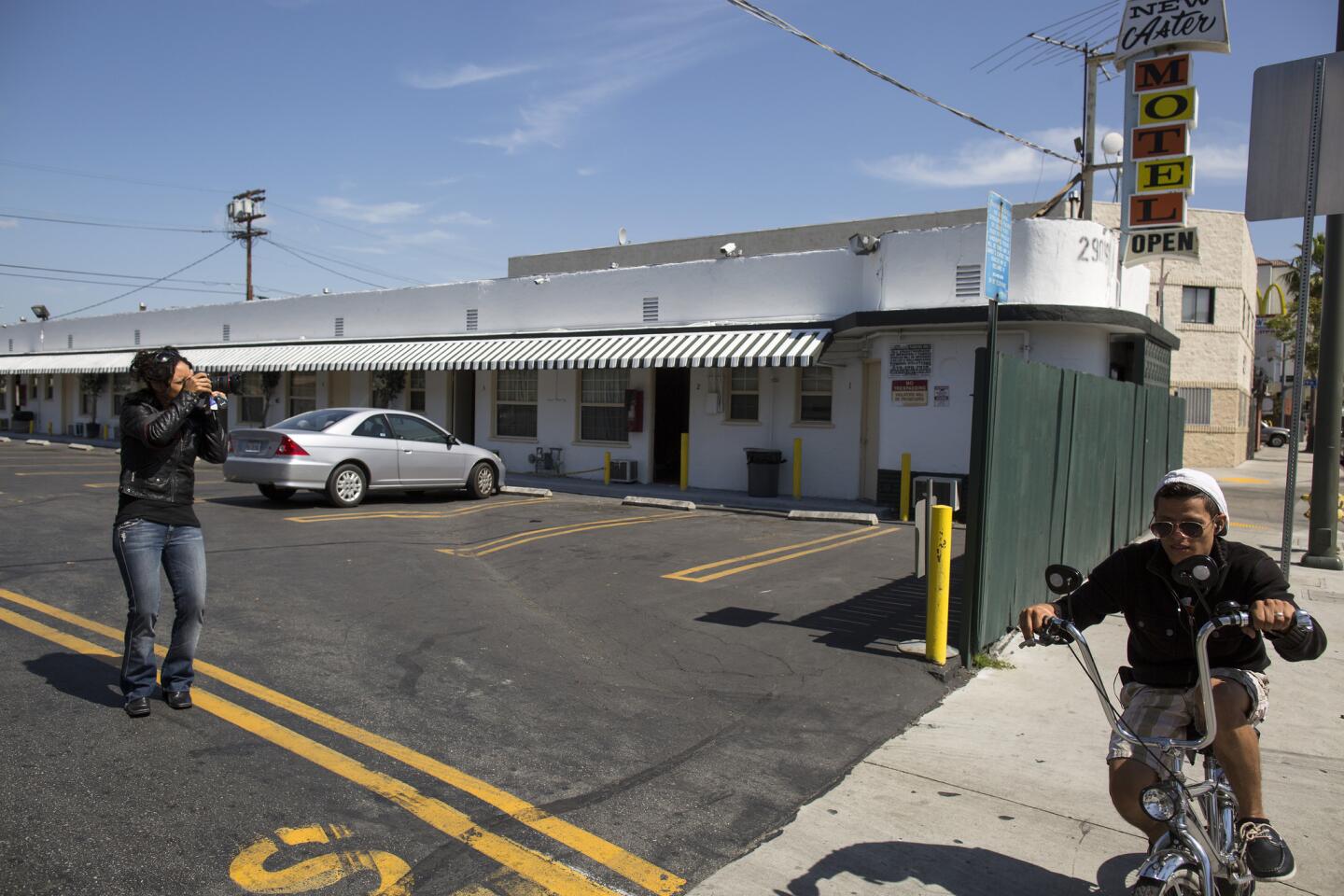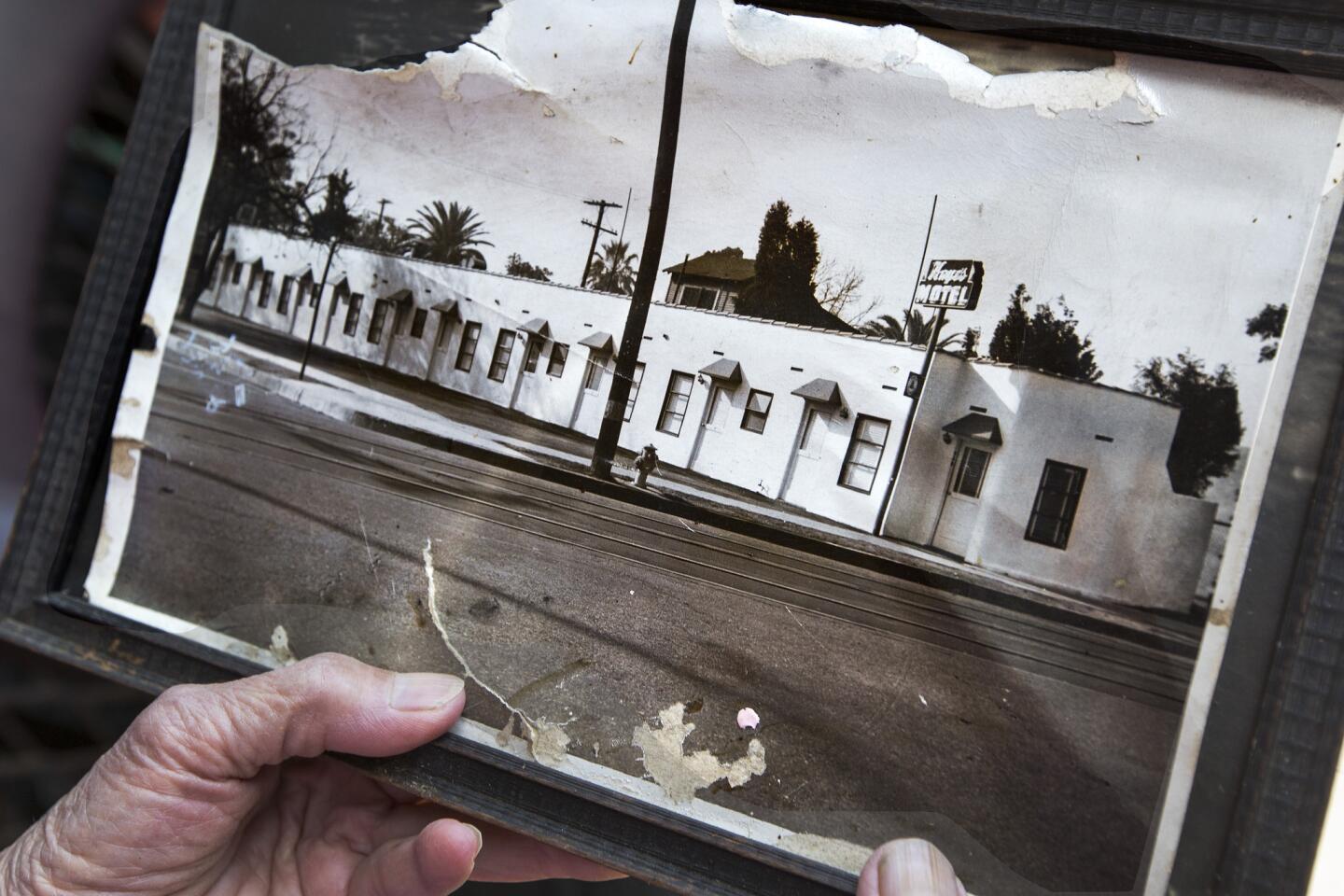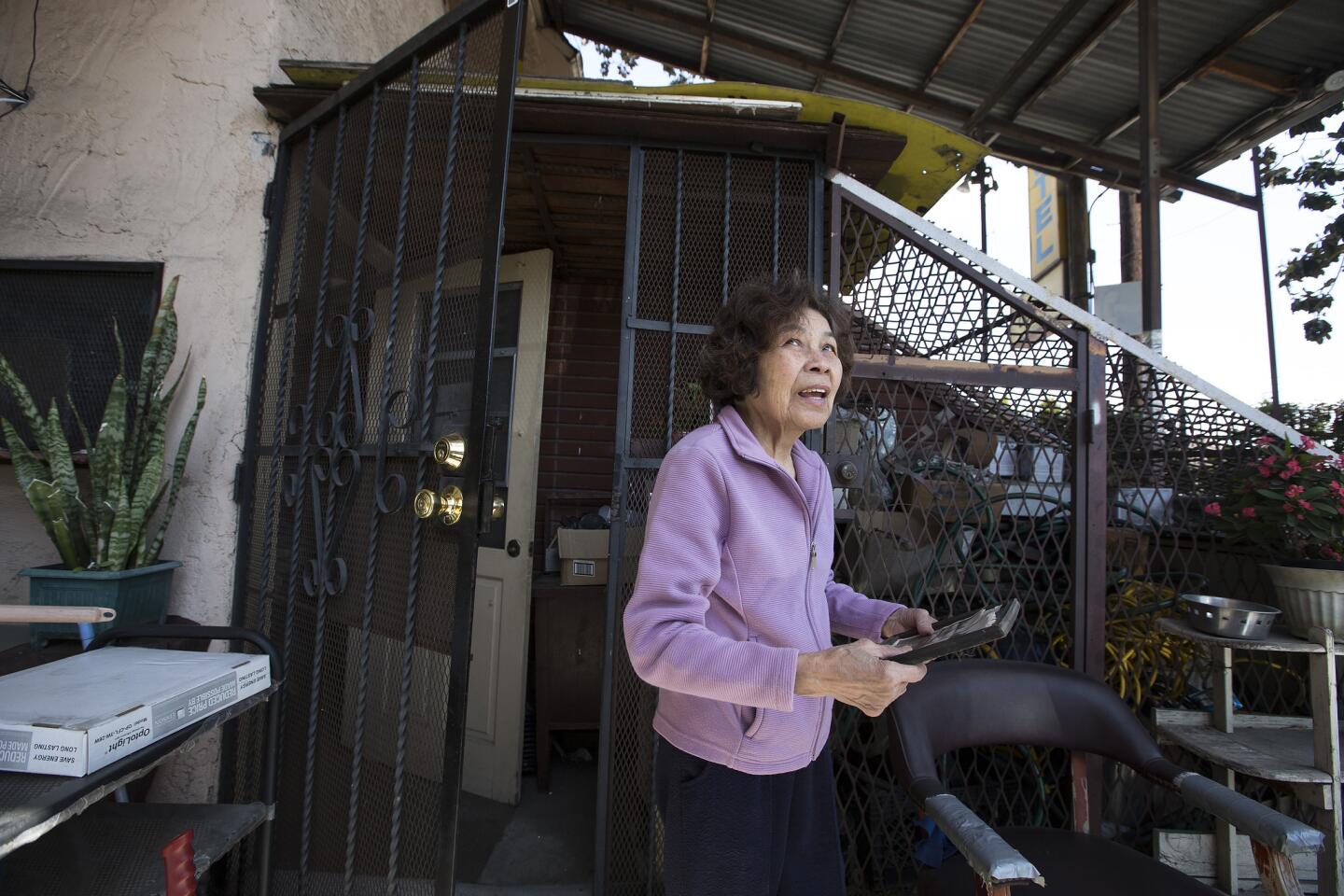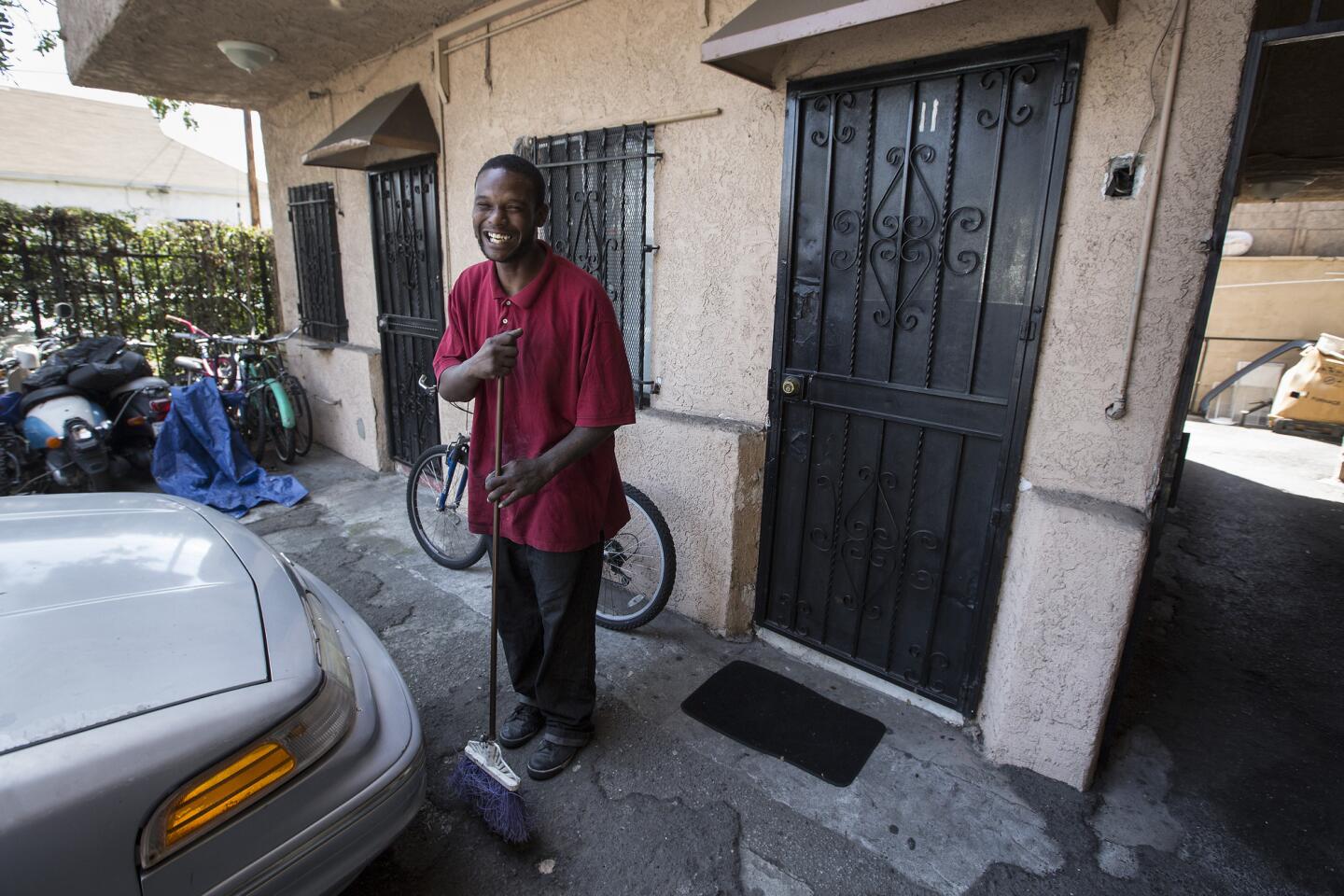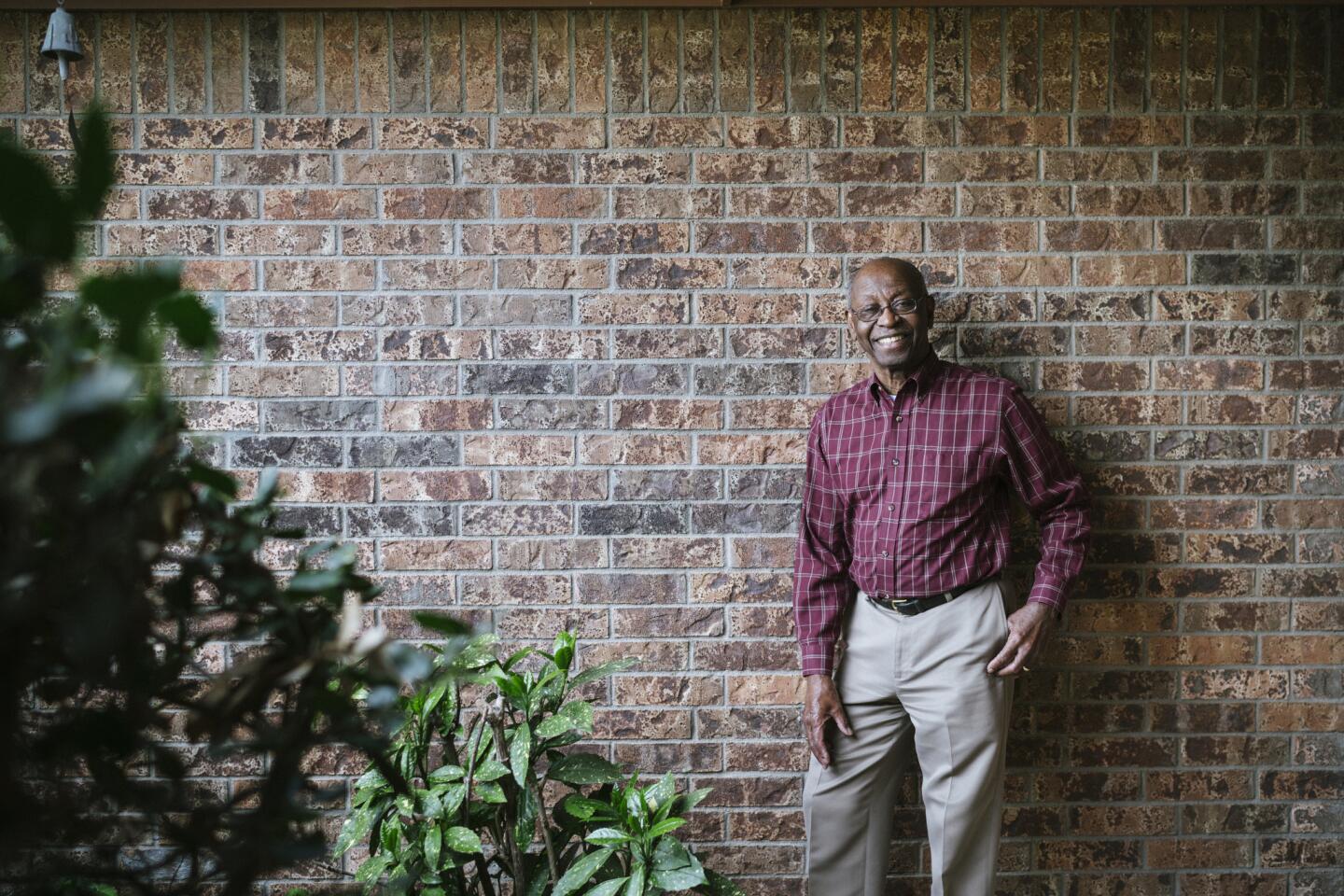Q&A: ‘A practical solution to a horrific problem’: When even Los Angeles needed havens for black drivers
- Share via
In the middle of the 20th century there was probably no idea more romantic than that of the open road — a physical and psychological space that seemed to beckon everyone across America, from nuclear families on vacation to wandering Beats (a.k.a. Jack Kerouac and company).
But the road was more open to some people than others. The segregation of hotels, restaurants and bathrooms, along with rules (official and not) about who was and wasn’t allowed to be in certain towns after dark, made road trips a challenge — not to mention potentially fatal — for African Americans.
Enter “The Negro Motorist Green Book,” a pocket-sized guide geared at African American roadtrippers. Devised by New York City postal employee Victor H. Green, the book, published from 1936 to 1964, provided comprehensive listings of friendly lodgings, restaurants, gas stations and much more.
Now Los Angeles photographer Candacy Taylor has undertaken an art project to record the sites listed in this historic guidebook as a way of remembering the places across the country that once gave shelter to weary black travelers. (The artist, in fact, who has earned grants from the National Endowment for the Humanities and the Graham Foundation for the series, is on a fellowship at the Schomburg Center for Research in Black Culture in New York to learn more about the guide’s history.)
Though the “Green Book” no longer exists, she says, what it represents remains important.
“I don’t want this to get relegated as something that happened in the past,” she says. “There’s this idea that we don’t need this anymore. But when you see what’s happened with Airbnb [in which a study showed that travelers with distinctly African American names are less likely to be accepted by a host], you realize that this remains an issue.”
Taylor took time to chat via telephone about her ongoing project — which she will present at the Petersen Automotive Museum early next month. In this lightly edited conversation she discussed how she first discovered the guide, what made it so special, and what makes the L.A. sites in the book particularly interesting.
How did you first learn about the “Green Book”?
I stumbled on the “Green Book” by accident. I was commissioned by Avalon to write some travel guides, to write a book on Route 66. I wanted to figure out a way to tell a different story. There have been so many books on Route 66. So I started asking myself, “Where were the black people? Where were the women?”
I happened to go to the Autry Museum [of the American West]. They had an exhibition on Route 66. And there was a “Green Book” tucked away in a corner of the display. I took a photograph of it — even though it said, “Do not photograph” — and then I went home and did research. It was a light-bulb moment.

WATCH: Richard L. Mitchell talks about the dangers faced by African Americans travelers in the days of segregation and how the “Green Book” led to safe havens along Route 66.
The guides can now be quite difficult to find. Where did you find actual “Green Books” to study?
At the library downtown, the Los Angeles Public Library. They have something like 11 editions. And I had been looking at them online through the Schomburg [a division of the New York Public Library]. It was quite an experience touching one. They’re smaller than you think they would be. Each one has a different cover. Flipping through pages was almost spiritual.
What struck you about them?
The road, having a car — it was a symbol of freedom. But you couldn’t have access to that as a black person. That was a big deal. But the way the “Green Book” presents it, it’s so matter-of-fact. It was this practical solution to this horrific problem.
The thing that was most interesting to me was that it didn’t have the weighted feeling of the threat of lynching or the danger you encountered on the road. It was like, “Here’s America and you can experience it too.” And it’s like, “We’re going to save you from ‘embarrassment,’” which is an unusual way to put it.
People call it an AAA for black people, but it also had department stores and haberdashers. There are garages and gas stations. If you were stranded by the side of the road, nobody was coming to help you if you were black. It reiterates how important this guide was and how much of a life saver it was.
The book contained listings all over the country — including numerous listings for Southern California and Los Angeles. What story does that tell about race in the West?
Westerners tend to be pretty delusional about issues of race sometimes. We demonize the Jim Crow South. But in some regards people there were sometimes safer because there were clear signs. You knew where you could and couldn’t be. If you traveled to the North or the West and you sat down in a restaurant, you could sit for an hour and nobody would come to you.
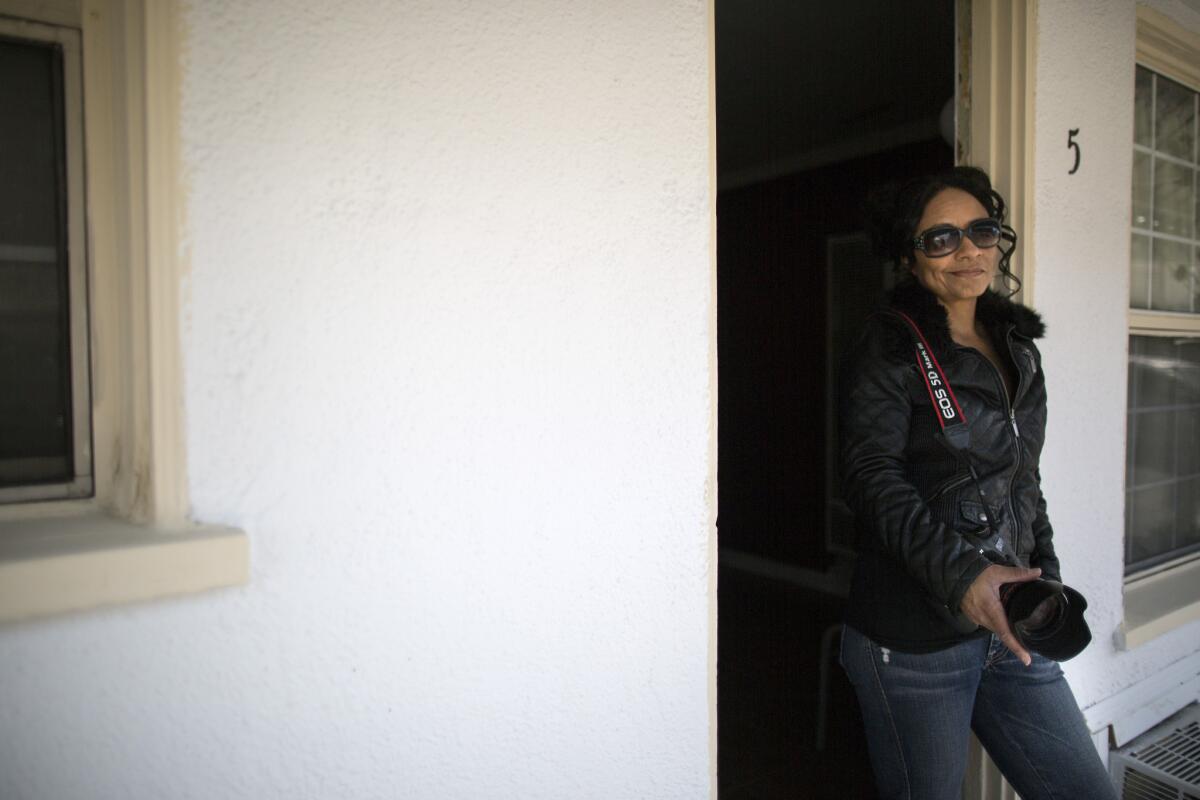
The road, having a car — it was a symbol of freedom. But you couldn’t have access to that as a black person. That was a big deal.
— Candacy Taylor, artist
There are 89 counties along Route 66. Of those, 44 of those were sundown towns. A sundown town was all white. Sometimes they rang a bell at six o’clock. If you were in that town, you could not be in the town after dark. There might be sign that said, “N----- don’t let the sun go down on you here.”
So this made the “Green Book” a real necessity for black travelers.
You needed it. It was life or death. Say you started in Chicago, where Route 66 begins. It might be 200 miles before you got to Springfield, Ill., which was the next place you could stay. And because the suburbs were mostly sundown towns, driving through there was no joke.
What about in Southern California?
In L.A., Glendale was a sundown town. Burbank was a sundown town. And in Pasadena, there were things like the pool. They would have what was called “International Day,” and that was the only day black people were allowed to go in. That’s right there in Pasadena.
The West in some ways was more dangerous because there were fewer black people in the West — so if you got stranded, the likelihood of finding someone who looked like you who could help you was unusual.
Let’s talk about some of the L.A. sites that you’ve photographed for your project. What is the history of Clifton’s Cafeteria in the “Green Book”?
Clifton’s is just an unusual place for so many reasons. Clifford Clifton, the founder, he was a Christian, he was a missionary, and he couldn’t believe that people were starving in a country with so much wealth. Clifton’s was a Depression-era restaurant. He started during the the hardest times in the country and he believed that everybody should be able to eat. He gave food away if he had to.
The cafeteria was at the actual terminus of Route 66. The Olive Street branch [the first Clifton’s ever opened] was in the “Green Book” from the early days. Then, in the ’50s, you had the Clifton’s that is on Broadway now. The Olive Street Branch closed and is a parking lot right now.
They would do things like host black fashion shows. He was very committed to the community of people who lived in the area. It wasn’t specifically a black place, but many people came. It’s always interesting to see a place like Clifton’s, run by a white man, who had an open-door policy. There was always that risk he would lose business.
Another important site is the Dunbar Hotel on Central Avenue. What can you tell me about that?
The Dunbar is pretty special because pretty much, since 1928, when it was opened as the Hotel Somerville, it has been an important site for black people. Dr. [John] Somerville, who was a black dentist and was sick of being shut out of hotels, he opened up this site and it was listed as the Waldorf Astoria for black people.
Then it became a place for the elite: Billie Holiday and Sarah Vaughan and Duke Ellington stayed there.That area became a little hub, a Harlem of the West. There were probably like 30 “Green Book” sites in [historic South Central]. There was Jack’s [Basket Room, a jazz club], right down the street. There were all kinds of places.
There are other sites, not necessarily associated with African American history, in your project, too — such as the Alexandria Hotel.
That hotel has a long history — mostly in the ’60s. It came later as a “Green Book” site. They hosted some pretty major black civil rights figures and events, so it was definitely a pretty critical place. And it was only a couple of blocks from Route 66. When you were at the end of your journey, you had a place to stay.
Much later though, it became borderline SRO.
Interestingly, the Biltmore Hotel (now the Millennium Biltmore) is also part of the project. How did the Biltmore end up in the “Green Book”?
It didn’t appear in the “Green Book” until the 1960s. Unlike the Alexandria, the Biltmore, from what I could tell, didn’t have a time where it lost its glamour. The architecture in that space was always pretty stunning. But it was in the ’60s, when there were a lot of major things happening — the civil rights movement was underway — that it popped up.
People were organizing. Mexicans and blacks were vying for civil rights and they would meet at the Biltmore. Or if there was a Malcolm X march, people might meet there. The fact that the Biltmore offered its downstairs area for this is pretty remarkable. And I think at one point there was a big dinner celebrating the tenure for the Los Angeles Sentinel’s publisher there. They would have these big balls and dances and dinners, these mostly black affairs.
What has been unique about the L.A. sites you’ve photographed for the project?
I’ve scouted over 1,200 “Green Book” sites around the country at this point. Ninety percent of them are gone. And often there is no trace that they were ever there. I have to say, in L.A., comparatively, there are a lot more around. There’s probably like 20 “Green Book” sites. That’s pretty amazing. There’s so much space, people build elsewhere. As a result, some of the history remains.
+++
Where: Petersen Automotive Museum, Mullin Family Grand Salon, 6060 Wilshire Blvd., Los Angeles
When: 7 p.m., Thursday, Nov. 10
Info: petersen.org and taylormadeculture.com
Sign up for our weekly Essential Arts & Culture newsletter »
Find me on Twitter @cmonstah.
ALSO:
This guidebook helped African Americans find a hotel along segregation-era Route 66
Review: Henry Taylor at Blum & Poe Gallery
Heinous history as potent muse in Underground Museum’s ‘Non-fiction’
Airbnb tries to fight racism with rule changes
More to Read
The biggest entertainment stories
Get our big stories about Hollywood, film, television, music, arts, culture and more right in your inbox as soon as they publish.
You may occasionally receive promotional content from the Los Angeles Times.
